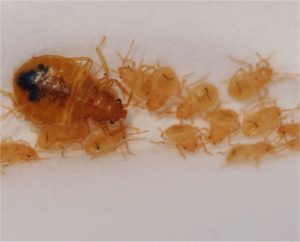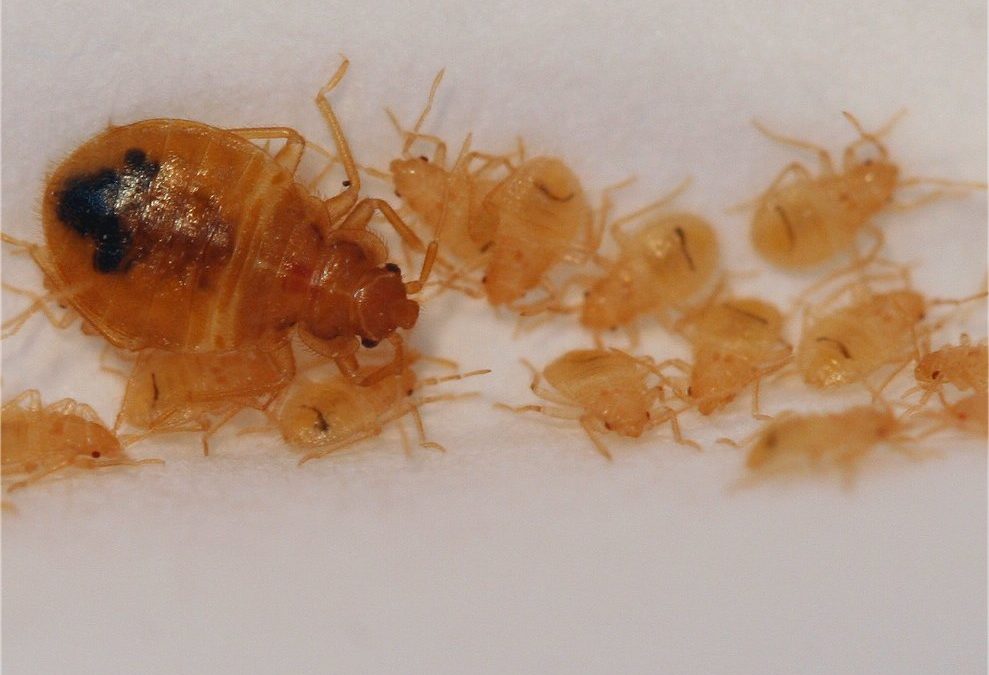According to the EPA, bed bugs are a public health pest. While you may be well-aware of the dangers of adult bed bugs, few people know about baby bed bugs. Learn everything you need to know about the nymphs and find out how you can keep them from taking over your business or home.
What are Baby Bed Bugs?
Also known as nymphs, baby bed bugs are smaller and paler versions of the adult pest. Although a full-grown adult can be between ¼” and ⅜” long, the nymphs are less noticeable in size. They are also less obvious in color, as they are a pale yellow as opposed to a dark reddish-brown.
As with all baby insects, baby bed bugs come from eggs. An adult female lays between 200 and 250 eggs in her lifetime. Typically, the eggs are laid in cracks and crevices and are close to a host organism. Common hiding spots for eggs include:
- Mattresses
- Baseboards
- Headboards
- Furniture
- Floorboards
- Electrical outlets
Only six to 10 days after they are laid, the eggs hatch. Then, the nymphs begin their life by searching for blood. Unlike adults, baby bed bugs need to eat frequently.

The Health Hazards of Nymphs
Just as you don’t want adult bed bugs in your building, you don’t want to find babies anywhere. All sizes of the pest can bite, and they are classified as health pests.
Although bed bugs do not carry disease, they can negatively impact your physical and mental health. Some people develop allergic reactions to bed bug saliva. While a minor allergy will only cause a small irritation, a severe reaction could cause anaphylaxis shock.
Even if you aren’t allergic to the insect, you could develop an infection from the bite. Possible effects include lymphangitis impetigo and ecthyma. Some people who have stayed in areas with bed bug infestations have reported suffering from anxiety and insomnia.
Economic Effects of Nymphs
There are also economic consequences of bed bugs that should be taken into consideration. If you own a hotel, bed bugs could ruin your business. One customer complaint about bed bugs is often enough to deter other guests.
In addition to losing business, there’s also the cost of eliminating an infestation. Traditional methods of bed bug removal rely on hazardous chemicals. Until the chemicals clear, you are unable to operate your business or live in your home. Even a few days of being unable to operate is enough to leave a business in financial distress.
Many of the traditional pest control methods also rely on costly pest control fees. Because only licensed professionals can do the job, your bed bug removal could cost more than you can afford.
How Can You Prevent and Remove Bed Bugs?
The best way to prevent and remove baby bed bugs without placing your business on the line. With Cryonite, you can use carbon dioxide snow to freeze bed bugs and their surrounding area. The extremely low temperature of the snow is too much for the pests to handle. They are frozen and killed on the spot, without any harsh chemicals.
Because Cryonite is non-toxic and no residue is left behind, you don’t need to worry about closing your business or home for an extended period of time or replacing all of your items.
What You Should Do at the First Sign of a Bed Bug
Whether you find evidence of a baby bed bug or an adult, you need to act quickly. They produce offspring at a rapid rate and need to be eliminated as soon as possible.
The sooner you use Cryonite, the sooner you can kill your invaders. To learn more about this essential pest control tool, give us a call today.

